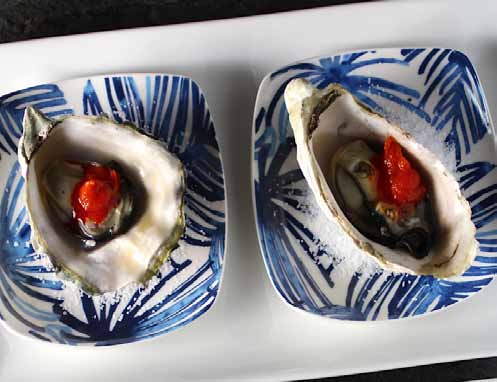Korean food has reached another milestone in America. In the past, the concept of Korean food was so foreign that it blended into just as an Asian cuisine and was often misconceived as Chinese food or even Japanese food. Gradually, Korean food started to have an identity and people are getting the idea of what Korean food is. Korean BBQ and Kimchi became the epitome of Korean cuisine. People were going out and seeking various Korean restaurants for those kinds of foods and slowly grasping the idea that with Korean food, it will always be accompanied with small side dishes called Ban-chan. Now, it has been recognized that Korean foods are colorful and rich in different tastes and range from stews to salads, to side dishes to main entrees, and from meats to vegetables – all cooked in so many different ways. Increasingly, people outside of the Korean community are stepping into Korean supermarkets to not only buy already prepared Korean side dishes and entrees, but are actually discovering the ingredients to their favorite Korean foods and making their own recipes!
|
This was the start of her love and actual making of Korean food. “I always shop [at Hannam Chain] as it is close to my school. They have a gigantic selection of produce and fish. I just love pushing my cart up and down the aisles and buying things I know nothing about!” said Lynn. Her pantry is definitely a testament to that statement, which has a whole shelf that is packed with major “Asian” ingredients needed in cooking Korean food such as gochujang (Korean red chili paste), chamgireum (sesame oil), and gochugaru (red chili flakes). Her refridgerator also has a small jar of Kimchi and even a bottle of soju (distilled rice liquor) and makkgeolli (unfiltered rice wine). Since then, Lynn stated that she has “purchased a boatload of Korean cookbooks, have had the pleasure of dining at many Korean restaurants, and was invited to review many for a recent publication.”
Follow Lori Lynn through Twitter: @tasteblog
BBQ OYSTERS – KOREAN STYLE RECIPE
While cooked oysters are much easier to shuck than live ones, it still can be dangerous. Never point the tip of the knife toward the hand holding the oyster, as it can slip and stab your hand. Practice slanting the knife downward. A chain mesh glove can be
|



